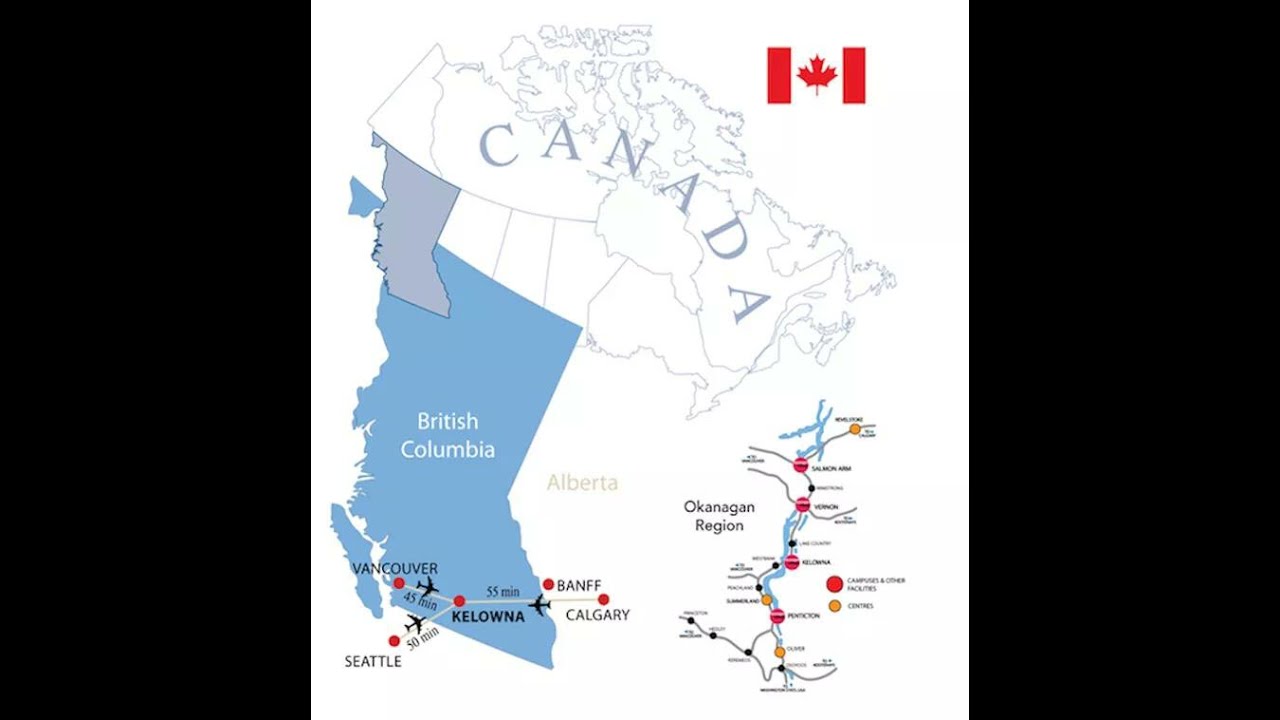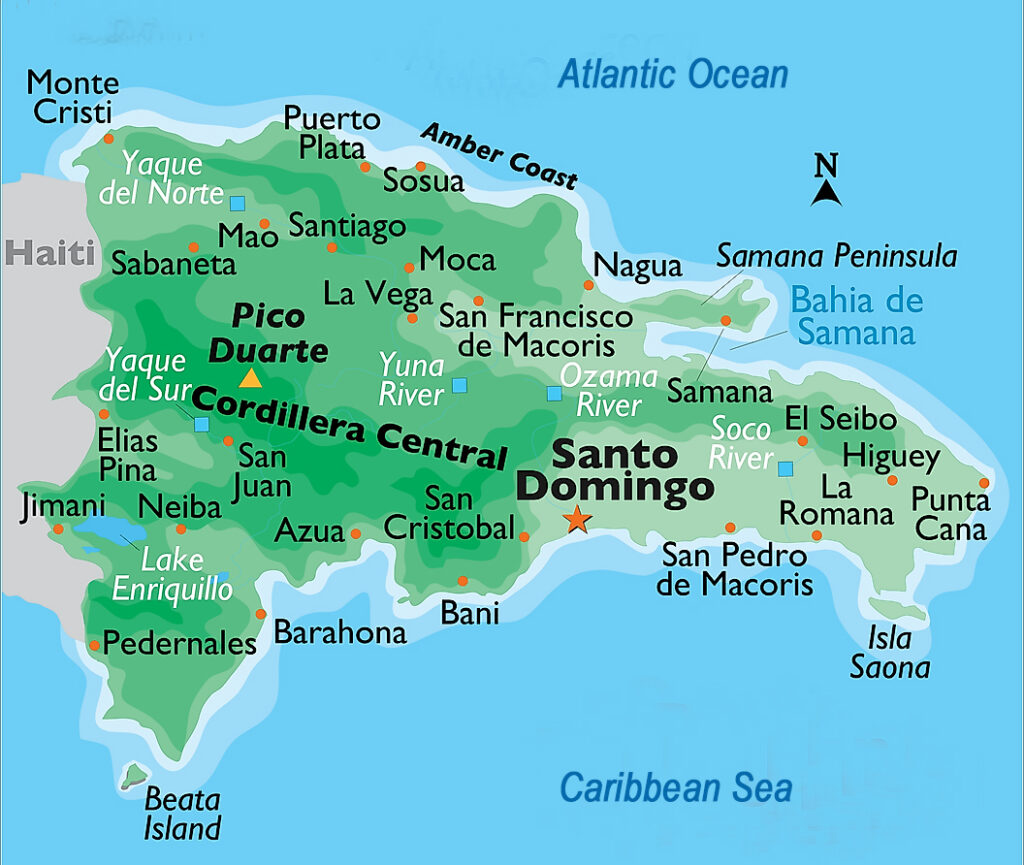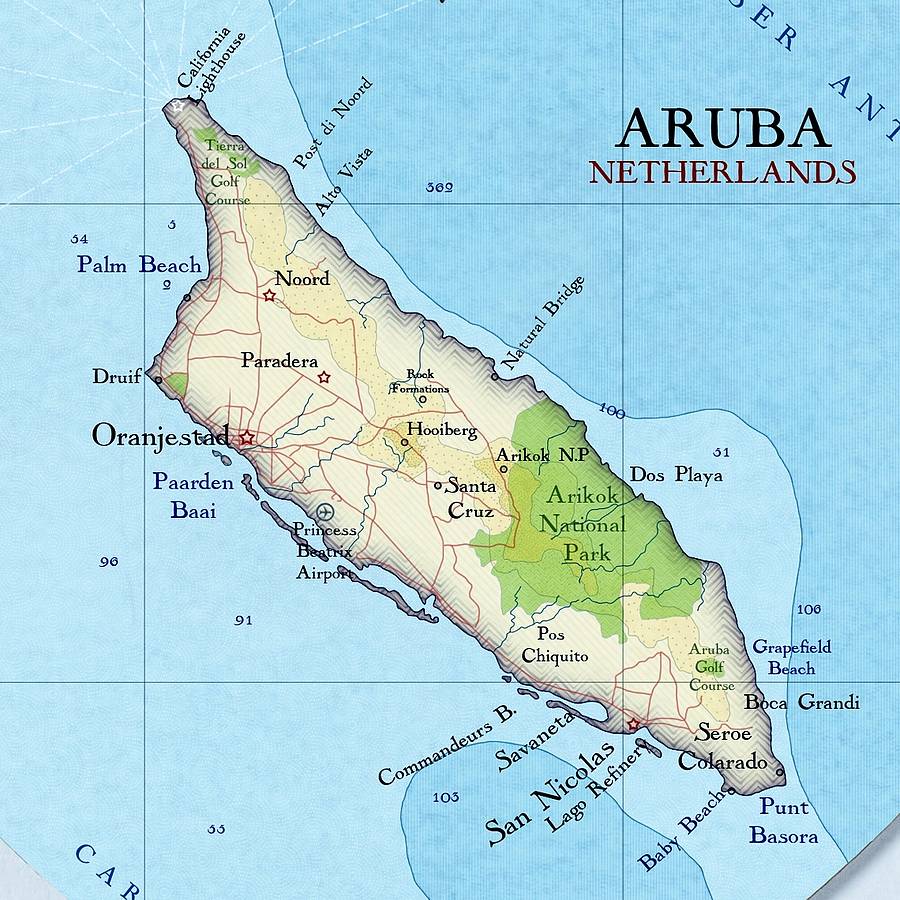Introduction
British Columbia (BC) is Canada’s westernmost province, renowned for its stunning natural landscapes, diverse cultural heritage, and vibrant cities. Bordered by the Pacific Ocean to the west and the Rocky Mountains to the east, BC offers a unique blend of coastal beauty and mountainous terrain. This guide provides an in-depth look at the province’s geography, political divisions, demographics, economy, and more.
Geographic Overview
Location and Size
British Columbia is situated on the west coast of Canada, bordered by the Pacific Ocean, the US state of Alaska to the northwest, the Canadian provinces of Alberta to the east, and Yukon to the north. The province covers an area of approximately 944,735 square kilometers (364,764 square miles), making it the third-largest province in Canada after Quebec and Ontario.
Topography
BC’s diverse topography includes mountains, forests, valleys, and coastlines. The province is dominated by several mountain ranges, including the Coast Mountains, the Columbia Mountains, and the Rocky Mountains. The highest peak is Mount Fairweather, standing at 4,663 meters (15,299 feet), located on the border with Alaska.
The Interior Plateau, nestled between the Coast and Columbia Mountains, features rolling hills and fertile valleys, while the Great Bear Rainforest, one of the largest temperate rainforests in the world, stretches along the central and northern coast.
Rivers and Lakes
British Columbia is home to numerous rivers and lakes, many of which play crucial roles in the province’s ecosystem and economy. The Fraser River, the longest river in BC, flows for 1,375 kilometers (854 miles) from the Rocky Mountains to the Pacific Ocean, traversing diverse landscapes and supporting rich biodiversity.
The Columbia River, originating in the Rocky Mountains and flowing into the US, is another significant waterway, known for its hydroelectric power generation. BC’s largest lake, Williston Lake, was created by the damming of the Peace River and spans approximately 1,761 square kilometers (680 square miles).
Climate
BC experiences a wide range of climates due to its diverse geography. The coastal regions, including Vancouver and Victoria, enjoy a temperate maritime climate with mild, wet winters and warm, dry summers. The interior regions have a continental climate, characterized by colder winters and hotter summers, with significant variations depending on elevation and latitude.
The mountainous areas have alpine climates with heavy snowfall in winter, making them popular destinations for winter sports. The northern regions of BC experience subarctic conditions, with long, harsh winters and short, cool summers.
Political Divisions
Administrative Divisions
British Columbia is divided into regional districts and municipalities, which help manage local governance. There are 27 regional districts, each encompassing several municipalities and unincorporated areas. Some of the major regional districts include:
- Metro Vancouver
- Capital (Greater Victoria)
- Fraser Valley
- Okanagan-Similkameen
- Thompson-Nicola
In addition to regional districts, BC has 162 municipalities, which range from large cities to small towns. The largest cities include Vancouver, Victoria, Surrey, Burnaby, and Richmond.
Government Structure
BC has a parliamentary system within the framework of constitutional monarchy. The provincial government is based in Victoria, the capital city. The Lieutenant Governor represents the monarch in BC, performing ceremonial duties.
The Legislative Assembly of British Columbia, composed of 87 elected members (MLAs), is the province’s legislative body. The Premier, the leader of the party with the most seats in the Legislative Assembly, heads the government. The current Premier is David Eby of the New Democratic Party (NDP).
The provincial government is responsible for areas such as education, healthcare, transportation, and natural resource management, while federal responsibilities include defense, immigration, and foreign policy.
Demographics
Population
As of 2023, British Columbia has an estimated population of approximately 5.3 million people. The population is diverse, with significant representation from various ethnic and cultural backgrounds. BC’s population has been growing steadily, driven by immigration and natural increase.
Language
English is the official language of British Columbia and is spoken by the vast majority of the population. However, the province’s multicultural nature means that many other languages are also spoken. Common languages include Punjabi, Mandarin, Cantonese, Tagalog, and Spanish. Indigenous languages, such as Halkomelem, Nuu-chah-nulth, and Kwak’wala, are also spoken within Indigenous communities.
Religion
British Columbia is known for its religious diversity. While Christianity remains the largest religious affiliation, there are also significant populations of people practicing Islam, Hinduism, Sikhism, Buddhism, and Judaism. A substantial portion of the population identifies as having no religious affiliation, reflecting the province’s secular nature.
Urbanization
BC is highly urbanized, with over 80% of the population living in urban areas. The largest urban center is Metro Vancouver, home to over 2.5 million people, followed by the Greater Victoria area, which has a population of around 400,000. Other significant urban areas include Kelowna, Kamloops, and Nanaimo.
Economy
Overview
British Columbia has a diverse and dynamic economy, characterized by strong service, manufacturing, and resource-based sectors. The province’s strategic location on the Pacific Rim makes it a gateway for trade with Asia, contributing to its economic growth.
Key Industries
Natural Resources
Natural resources have historically been the backbone of BC’s economy. The forestry industry remains significant, with vast forests providing timber for lumber, pulp, and paper products. The province also has rich mineral resources, including coal, copper, gold, and silver, supporting a robust mining sector.
Energy
BC is a leader in renewable energy, particularly hydroelectric power. The province’s numerous rivers and lakes facilitate the generation of clean electricity, which accounts for a substantial portion of the province’s energy supply. BC is also exploring other renewable energy sources, such as wind, solar, and bioenergy.
Technology and Innovation
The technology sector is a rapidly growing part of BC’s economy. Vancouver, in particular, has emerged as a tech hub, attracting startups and established tech companies. The province is known for its strengths in software development, film and television production, biotechnology, and digital media.
Tourism
Tourism is a major economic driver, with millions of visitors drawn to BC’s natural beauty, outdoor activities, and cultural attractions. Popular tourist destinations include Vancouver, Victoria, Whistler, and the Okanagan Valley. The province offers a wide range of activities, from skiing and snowboarding to hiking, fishing, and whale watching.
Trade
British Columbia’s strategic location and extensive port infrastructure make it a vital player in international trade. The Port of Vancouver is the largest and busiest port in Canada, handling a wide variety of goods, including containers, bulk commodities, and automobiles.
BC’s main trading partners include the United States, China, Japan, South Korea, and other Pacific Rim countries. Key exports include lumber, minerals, natural gas, seafood, and agricultural products. The province also imports a wide range of goods, such as machinery, electronics, vehicles, and consumer products.
Economic Challenges
Despite its economic strengths, BC faces several challenges. Housing affordability is a significant issue, particularly in the Metro Vancouver area, where high demand and limited supply have driven up prices. The province also faces environmental challenges related to resource extraction and climate change, requiring careful management and sustainable practices.
Culture
Heritage and Traditions
British Columbia’s culture is a rich tapestry woven from Indigenous traditions, European heritage, and the influences of diverse immigrant communities. The province’s cultural landscape is continually evolving, reflecting its dynamic and multicultural population.
Indigenous Peoples
BC is home to a diverse range of Indigenous peoples, each with their own distinct cultures, languages, and traditions. Major Indigenous groups include the Coast Salish, Nuu-chah-nulth, Haida, and Nlaka’pamux. Indigenous art, such as totem poles, carvings, and weaving, plays a significant role in the province’s cultural heritage.
Arts and Entertainment
The arts scene in BC is vibrant and diverse, encompassing visual arts, performing arts, music, and literature. Vancouver and Victoria are cultural hubs, hosting numerous galleries, theaters, and music venues. The Vancouver International Film Festival and the Victoria Symphony are just two examples of the many cultural events that take place annually.
BC is also known for its thriving film and television industry, often referred to as “Hollywood North.” The province’s diverse landscapes and state-of-the-art production facilities make it a popular location for filming, attracting major productions from around the world.
Festivals and Celebrations
British Columbians celebrate a wide array of festivals and events throughout the year. Some notable celebrations include:
- Vancouver International Film Festival: Showcasing international and Canadian films.
- Victoria Day Parade: Celebrating the birthday of Queen Victoria with a grand parade in the capital city.
- Vancouver Folk Music Festival: Featuring folk music artists from around the world.
- Diwali Fest: Celebrating the Hindu festival of lights with cultural performances and activities.
- Indigenous Peoples Day: Honoring the diverse cultures and contributions of Indigenous peoples.
Cuisine
BC’s cuisine reflects its diverse cultural influences and abundant natural resources. Seafood is a staple, with salmon, halibut, and Dungeness crab being particularly popular. The province’s fertile valleys produce a wide variety of fruits and vegetables, and the Okanagan Valley is renowned for its wineries and vineyards.
Vancouver and Victoria boast a thriving culinary scene, offering everything from gourmet restaurants to food trucks serving international cuisines. Local specialties include Pacific Northwest cuisine, farm-to-table dining, and fusion dishes that blend different culinary traditions.
Sports and Recreation
Outdoor activities are an integral part of life in British Columbia, thanks to its diverse landscapes and favorable climate. Popular recreational activities include hiking, skiing, snowboarding, kayaking, and mountain biking. BC is home to world-class ski resorts, such as Whistler Blackcomb, and numerous provincial parks that offer stunning natural scenery and outdoor adventure opportunities.
Sports are also an important part of BC’s culture. The province has several professional sports teams, including the Vancouver Canucks (NHL), the BC Lions (CFL), and the Vancouver Whitecaps (MLS). Community sports and recreational leagues are widespread, promoting active lifestyles and community engagement.
Tourism
Major Tourist Destinations
Vancouver
Vancouver, BC’s largest city, is a vibrant and cosmopolitan urban center known for its stunning natural surroundings. Visitors can explore Stanley Park, Granville Island, and the bustling neighborhoods of Gastown and Yaletown. The city’s cultural scene includes world-class museums, theaters, and dining options.
Victoria
Victoria, the capital of British Columbia, is located on Vancouver Island and is famous for its historic architecture, beautiful gardens, and charming waterfront. Key attractions include the Royal BC Museum, Butchart Gardens, and the BC Legislature. The city’s British colonial heritage is evident in its architecture and traditions.
Whistler
Whistler is a premier year-round resort destination located in the Coast Mountains. Known for its world-class skiing and snowboarding in the winter, Whistler also offers a range of summer activities, including mountain biking, hiking, and golfing. The pedestrian-friendly Whistler Village is a hub of shops, restaurants, and entertainment.
Okanagan Valley
The Okanagan Valley, located in the southern interior of BC, is renowned for its wineries, orchards, and stunning lakes. Kelowna, the largest city in the region, offers excellent dining, shopping, and recreational activities. Visitors can tour vineyards, sample local wines, and enjoy water sports on Okanagan Lake.
Ecotourism
BC’s diverse natural landscapes provide numerous opportunities for ecotourism. The Great Bear Rainforest, one of the largest temperate rainforests in the world, offers wildlife viewing, guided tours, and opportunities to learn about Indigenous cultures. Other notable ecotourism destinations include the Gulf Islands, the Kootenay Rockies, and the Cariboo Chilcotin Coast.
Adventure Tourism
Adventure tourism is thriving in British Columbia, attracting thrill-seekers from around the world. Activities such as heli-skiing, white-water rafting, zip-lining, and rock climbing are popular. The province’s rugged terrain and pristine wilderness areas provide ideal settings for outdoor adventures.
Historical Background
Indigenous History
Before European contact, the area now known as British Columbia was inhabited by numerous Indigenous peoples, each with their own distinct cultures, languages, and territories. These groups had complex social structures, economies, and traditions that have endured to the present day.
European Exploration and Colonization
European exploration of the BC coast began in the late 18th century, with expeditions by explorers such as Captain James Cook and George Vancouver. The fur trade brought further European presence, with the establishment of trading posts by the Hudson’s Bay Company and the North West Company.
In the mid-19th century, the discovery of gold in the Fraser River and Cariboo regions sparked a series of gold rushes, leading to an influx of settlers and significant changes to the landscape and Indigenous ways of life. In 1858, the Colony of British Columbia was established, and in 1871, British Columbia joined the Canadian Confederation.
Modern History
Throughout the 20th century, BC’s economy diversified, with growth in sectors such as forestry, mining, and fishing. The construction of the transcontinental railway and the development of major ports facilitated trade and transportation.
In recent decades, British Columbia has become a leader in technology and innovation, renewable energy, and environmental conservation. The province continues to grapple with issues related to Indigenous rights, environmental sustainability, and economic development, striving to balance growth with stewardship of its natural and cultural resources.
Environmental Issues
Deforestation and Land Use
Deforestation and land use changes have significant environmental impacts in British Columbia. Logging, agriculture, and urban development have led to habitat loss and ecosystem disruption. Sustainable forestry practices and land use planning are critical to balancing economic interests with environmental conservation.
Climate Change
Climate change poses a significant threat to BC’s environment, affecting weather patterns, sea levels, and ecosystems. The province is experiencing more frequent and severe wildfires, changes in precipitation, and impacts on marine and terrestrial species. Efforts to mitigate climate change include reducing greenhouse gas emissions, transitioning to renewable energy, and enhancing climate resilience.
Water Management
Water management is a crucial issue in British Columbia, with concerns about water quality, availability, and ecosystem health. The province’s rivers, lakes, and coastal waters are vital resources for communities, industries, and wildlife. Policies and initiatives focus on sustainable water use, pollution prevention, and protecting aquatic ecosystems.
Conclusion
British Columbia is a province of remarkable diversity, offering a rich blend of natural beauty, cultural heritage, and economic opportunity. From the bustling urban centers of Vancouver and Victoria to the pristine wilderness of its mountains and coastlines, BC provides a unique and dynamic environment for residents and visitors alike. Understanding the province’s geography, political structure, demographics, economy, and cultural fabric offers a comprehensive view of this vibrant and multifaceted region. As British Columbia continues to grow and evolve, it remains committed to preserving its natural and cultural heritage while embracing innovation and progress.
What are 5 interesting facts about British Columbia?
British Columbia is home to the largest ski resort in North America, Whistler Blackcomb. The Great Bear Rainforest in BC is one of the largest temperate rainforests in the world. BC has the mildest climate in Canada, particularly in coastal areas like Vancouver and Victoria. The province has more than 20,000 kilometers of coastline. BC’s capital, Victoria, is located on Vancouver Island and is known for its historic architecture and vibrant gardens.
What is British Columbia known for?
British Columbia is known for its stunning natural beauty, including mountains, forests, and coastline. It is also famous for its outdoor recreational activities like skiing, hiking, and fishing. Additionally, BC is recognized for its diverse cultural scene and vibrant cities like Vancouver and Victoria.
Which part of the world is British Columbia?
British Columbia is located on the west coast of Canada, bordered by the Pacific Ocean to the west, the US state of Alaska to the northwest, the Canadian province of Alberta to the east, and the US states of Washington, Idaho, and Montana to the south.
What is unique about the location of British Columbia?
The unique location of British Columbia offers a diverse range of landscapes, from coastal rainforests and rugged coastlines to towering mountain ranges and fertile valleys. Its position on the Pacific Rim makes it a crucial gateway for trade with Asia, and its natural beauty attracts tourists from around the world.
What is the main language in British Columbia?
The main language in British Columbia is English, which is spoken by the vast majority of the population. However, the province’s multicultural population means that many other languages, including Punjabi, Mandarin, Cantonese, and Tagalog, are also commonly spoken.
Why is Canada called British Columbia?
The name “British Columbia” was chosen by Queen Victoria in 1858. “British” reflects the province’s colonial heritage as part of the British Empire, and “Columbia” refers to the Columbia River, which was named after Christopher Columbus.
What food is British Columbia known for?
British Columbia is known for its seafood, especially Pacific salmon, halibut, and Dungeness crab. The province also has a thriving wine industry, particularly in the Okanagan Valley, and is famous for its farm-to-table cuisine, with an emphasis on fresh, local ingredients.
What is the climate in BC?
The climate in British Columbia varies widely due to its diverse geography. Coastal areas, like Vancouver and Victoria, have a temperate maritime climate with mild, wet winters and warm, dry summers. The interior regions experience a more continental climate, with colder winters and hotter summers, while the mountainous areas have alpine climates with heavy snowfall in winter.
Does it snow in British Columbia?
Yes, it snows in British Columbia, particularly in the mountainous regions and the interior of the province. Coastal areas, such as Vancouver, experience less snowfall and milder winters compared to the rest of the province.
Does British Columbia have mountains?
Yes, British Columbia has several mountain ranges, including the Coast Mountains, the Columbia Mountains, and the Rocky Mountains. These ranges are known for their stunning scenery, outdoor recreational opportunities, and diverse ecosystems.
How long is winter in British Columbia?
The length of winter in British Columbia varies depending on the region. In coastal areas like Vancouver and Victoria, winter is relatively mild and lasts from November to February. In the interior and mountainous regions, winter conditions can start in October and last until April, with colder temperatures and significant snowfall.
- 10 Biggest Urban Parks In The World - September 30, 2024
- 10 Animals Found In Brazil - September 29, 2024
- The Best Small Towns To Retire In Virginia - September 21, 2024




